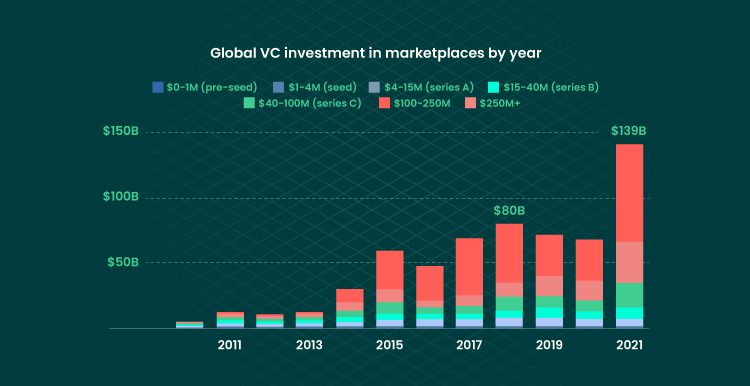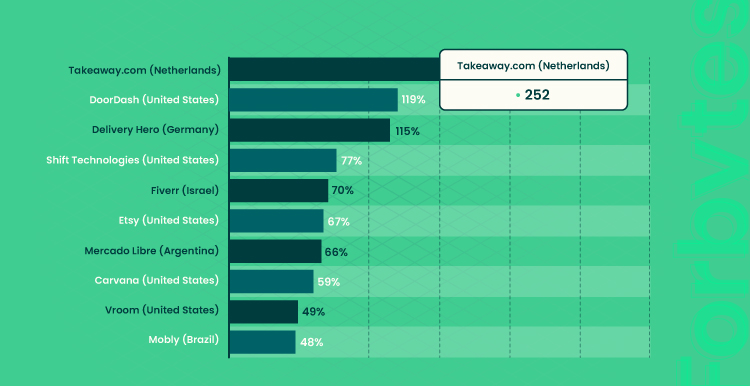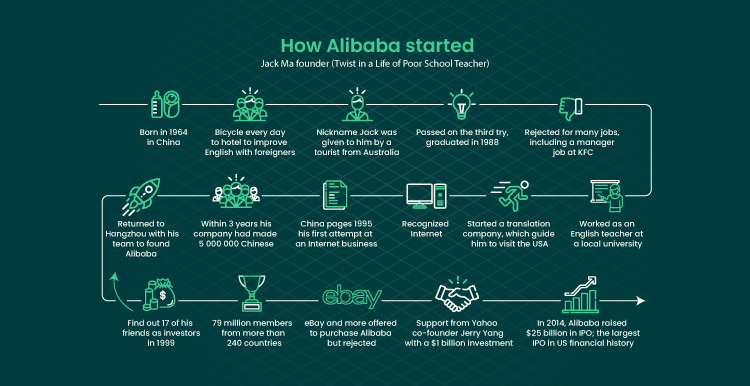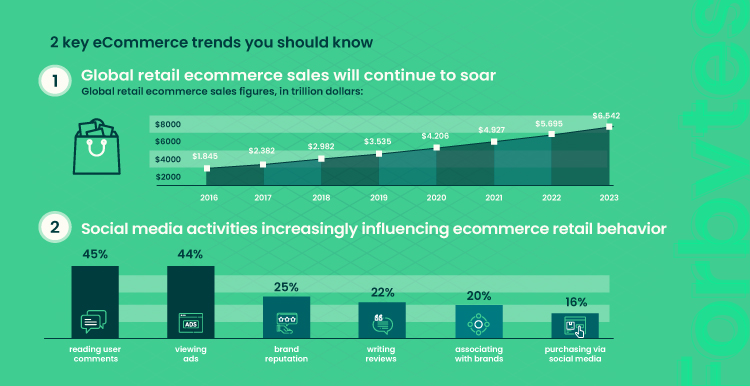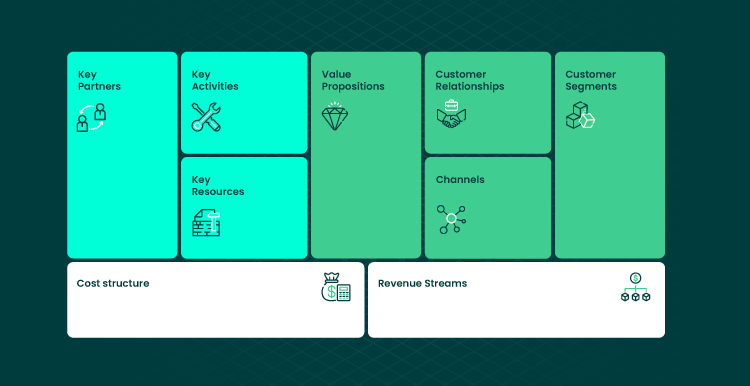Innovative business technology has pushed traditional commerce to its limits, but the new era of enterprise marketplaces still leaves a void for direct selling in the 21st century. This is now a good time for entrepreneurs to consider starting their own enterprise platforms.
In an increasingly competitive marketplace, it can be difficult for a new company to stand out from the crowd. Looking to take your business to the next level? Start an enterprise marketplace to give your customers access to businesses selling the products and services they need. In this article, we’ll go into detail on how to start your own enterprise marketplace.
What Is B2B Enterprise Marketplace?
Enterprises value the ability to reach potential partners and customers with just a few clicks, which can be achieved through a B2B enterprise marketplace. Specifically, an online marketplace matches buyers with sellers by providing a platform for them to find each other and connect.
A standard enterprise market organization assumes that the native company conducts operations related to products/services together with trading partners. These marketplaces (Alibaba, eBay, Etsy, etc.) don’t offer goods and services. They aim to connect merchants with customers. An online services marketplace platform is a peer-to-peer platform that facilitates the sale and purchase of goods and services between private individuals and companies.
Many organizations operate in online marketplaces that provide a space for vendors and individuals to trade and do business. Companies seeking to expand their service offerings with complementary products and juggle their partner networks should consider investing in enterprise ecommerce solutions. Besides, VC investments in enterprise marketplaces grow yearly.
With increased interest in alternative business models, enterprise marketplaces have become more popular for businesses seeking opportunities for profitable collaboration. The thing is, a B2B enterprise marketplace is not only a place to buy/sell. It is a collaborative enterprise e-commerce platform where buyers and vendors come together to look for products and services, negotiate, and agree on fair prices.
What Are the Business Benefits of Enterprise Marketplaces?
The B2B enterprise marketplace has become a booming industry, and it has a lot of advantages for both buyers and sellers. Marketplaces like 1Sale, CraigsList, and Etsy started from nothing but grew to meteoric success because they allowed buyers and sellers to join forces to increase the value of the platform for both parties, as well as improve usability.
A study conducted in June 2021 predicted that the Dutch online food delivery service Takeaway.com would have the highest increase in CAGR in 2019-2021, followed by the American DoorDash with a CAGR of 119 percent, and the German Delivery Hero (third place) with an increase of 115 percent.
The advent of enterprise marketplaces has given way to new business forms and increased efficiency in some sectors. Basically, SaaS e-commerce platforms such as Amazon and Salesforce are the destination for B2B companies looking to find suppliers. These marketplaces help sellers improve their productivity, execute their supply chain, and increase their margins. They also help suppliers cut their costs and reach new customers without the long-term financial risks that come with traditional B2B relationships.
The business benefits of an enterprise marketplace depend on the type of marketplace you decide to create. Though some co-occurring functions overlap, real differences exemplify how each of the marketplaces can be successful.
Multi-Vendor Marketplace
A multi-vendor marketplace is a marketplace that provides customers with access to a variety of different brands or products. It’s a complex network that takes you through the different buying cycle stages. The sellers on the site typically offer a wide range of products, usually with the intent to earn a profit, and buyers browse for products or services to buy. Multi-vendor marketplaces can be useful services for both startup business owners and businesses with many different products.
- New revenue streams. The multi-vendor marketplace is a boon for entrepreneurs. It reveals how vendors can improve sales through a market where a product is relevant to multiple buyer personas. Such ecommerce solutions for enterprises combine multiple products, services, and vendors all under one easy-to-use interface. The estimated size of the multi-vendor marketplace is predicted to rise up to $60.14 billion by 2023.
- Connection with end customers. An open, multi-vendor marketplace is one surprising way to help draw more vendors to a marketplace. Collaboration is crucial for providing the technologies that both customers and vendors need.
- New capabilities. Contingent software vendors, IT outsourced service providers, and communication agency executives that accompany these new vendors are positioned to bring large-scale change to the B2B industry. As the industry is entering a new growth stage, the need for collaboration is greater than ever before. And to do that, new technologies, marketing methods, and different supply chain partners are coming together to help make things happen.
Procurement Marketplace
B2B procurement is a process that involves matching buyers who need goods or professional services with potential suppliers who can provide the same according to a procurement policy and budget. The procurement services marketplace platform makes the process easier by making it fully automated so that the matching process and the process of locating suppliers can be carried out by any individual who can do so with minimal effort.
The procurement marketplace is a logistical execution mechanism. This category of enterprise platforms is used to make procurement more fluid by reducing inventory and increasing the utilization of resources, ensuring the functioning of the whole chain of logistics in your business. Procurement is buying raw materials, manufacturing goods, and providing services or the set of supply-side activities required to create and deliver goods and services to customers continuously to meet customer demands.
- Manage procurement. The procurement marketplaces manage the procurement process and the overall procurement inventory from vendors. They also grant access to management tools and specialized procurement tools that vendors would otherwise not have. This automated process saves time and decreases the potential for fraud. Manufacturing procurement marketplaces help manufacturers procure new customers, build supplier relationships, better manage the cost of goods, and accelerate procurement.
- Optimize procurement. Smart executives have come up with many ways to save time and money and reduce frustration by using marketplaces for procurement. Procurement marketplaces streamline the process for your POs and buyers, giving them a central location to find vendors and solicit price quotes. Thus, they foster purchasing by removing potential silos, allowing companies to reduce operational costs and improve procurement time.
- Facilitate franchise relationships. The procurement marketplaces help franchises to pool their resources and consolidate their buying power. They help provide economies of scale by leveraging franchises as a work environment that facilitates a partnership between small business owners and investors. It presents a scalable new way for brands to identify and gain access to franchisees interested in continuing their product line.
Branded Marketplace
An enterprise e-commerce platform called a branded marketplace is a virtual space where buyers and sellers can find and purchase products under one roof. They can enhance trust in the marketplace by rating sellers with stars and flags that indicate the level of trust given to each company to increase their business reliability. It is a place where companies can create their own branded stores, building a community around brand and product.
- Expanding product offering. B2B companies see a shift in the way they sell products to customers due to the emergence of branded marketplaces, the preferred option for many large buyers. The shift is a clear opportunity for many companies to grow business opportunities and revenue. Still, they can also experience benefits such as increased conversion rates and growth in gross margin. Branded marketplaces allow a company to expand its visibility without high costs for marketing.
- Leverage business assets. Organizations with a large distribution center, warehouse, or location network can maximize their assets within a marketplace. Enterprises can connect marketplaces with fulfillment centers or pick-up locations, unlocking value for themselves and their customers. That results in greater supply chain visibility, new product offerings, and a better customer experience.
- Strengthen the partner ecosystem. The network-based marketplace is key in the modern world of branded partnerships and client acquisition. The branded marketplace is another new way of interacting with consumers throughout the brand’s journey. However, this format differentiates itself by marrying the power of digital marketing with the conventional wisdom of B2B marketing. The partner ecosystem is an essential part of a branded marketplace, and differentiating it from other eCommerce platforms can help ensure a more successful business. Branded marketplaces are fast becoming the go-to way to improve partner relationships and build stronger ecosystems.
The number and types of eCommerce sites have exploded, but the list of marketplaces is not yet complete. To succeed in this new industry, you’ll need to be creative, strategic, and adaptable. Let’s see how to create an online marketplace.
Create Your Own Enterprise Marketplace
Digital enterprise marketplaces can now serve the masses by leaps and bounds. Has your company gained traction and is now looking to expand? Do you want to use the digital market to build your customer base and potentially sell across different channels but don’t know the best way to do this? If so, then you’re in the right place.
Starting a marketplace is hard work. Industry-leading entrepreneurs put tremendous effort and resources into building successful enterprise e-commerce solutions. Let’s overview all the details you need to take into account when building a marketplace.
Prepare a Foundation
Creating a marketplace, like constructing a house, requires a good foundation. Building on a solid foundation will help you avoid confusion later on and help lower the costs of building your marketplace. A SaaS e-commerce platform has to be a one-stop shop for all the resources you need to connect with new business opportunities.
There are several factors in building a foundation, ranging from teamwork and selling to an understanding of your vision, which can make a difference if they are taken into consideration. It’s about understanding the customer journey, where you’re looking to go, and how to get there. So, before you start building a services marketplace platform, think about your end goals.
And this brings us up to the second point – solving a specific problem.
Identify a Problem to Solve
To earn revenue and scale a company, you need to develop customer intimacy, solve problems, and grow your business proposition. Take action to find customers’ needs (surveys, studies, research), and do everything you can to solve that problem.
It’s like a vicious cycle. If you find a problem your marketplace will solve, you’ll find a buyer base. If you find the best product to solve a problem, you’ll create a scenario where users will seek out your product for a solution.
Reserve the Resources
With enterprises using marketplace lending to address flexibility, scalability, and transparency, it’s time to look at what can be leveraged to help businesses. Businesses of all sizes can and should benefit from developing this real-time marketplace. How?
It’s crucial to develop an ecosystem of partners and rivals who know your business and can serve as valuable go-to experts. Those are the people who can then invest in your marketplace and help you achieve your goals. Create your pitch and prepare for the true partners’ feedback with your plan in place.
Collect the Necessary Tools
The tools it takes to run the commerce are very different, whether it’s a WordPress-powered site or a custom-designed website. Customer segmentation, customer intelligence, and customer interaction automation tools are vital to creating an enterprise marketplace with high customer retention.
Some tools make it easy for you to create your own marketplace. These are helpful marketplace builders, easy-to-use platforms that provide you with a place to post, engage, and meet with other sellers and help you grow your clients and find new ones along the way.
However, remember that the ongoing digital transformation of retail business demands change and innovation. As you adjust to a constantly changing global market and feedback from the customers, we recommend re-examining the way you do business and what tools and activities are required to work successfully.
Think of a Business Operation Model
One way to think about your business operation is to create a business model canvas. A business model canvas visualizes a business model that allows teams to make data-backed decisions about the changes they’d like to see. It makes marketers think and provide diverse, engaging content for the SaaS e-commerce platforms.
It’s a visual representation of a company’s current strategy and future projections.
Understand the Supply Types
Suppliers typically have a bit more motivation to join a platform that’s successful. But before trying to lure suppliers, decide whether your marketplace will provide a homogeneous or heterogeneous supply.
Marketplaces that offer products or services with identical characteristics and prices are homogeneous (like Uber, one of the best peer-to-peer marketplace examples). The number of options in a heterogeneous market often makes it difficult for customers to make a choice since it may be hard to decide among many different vendors and equipment based on their different offerings. For example, Airbnb has many options in terms of listings; thus travelers should compare all available listings and prices.
The idea is to better understand the supply type that will work for your marketplace. Along with understanding the type, you can optimize your offering to your target audience. This can give you some insight into what type of supply you should create to address their needs and how you can break down your products and services to serve your market.
Your product, market, and supply-demand dynamics will determine the most effective content types and help you understand the type of content your business needs to attract the customers you want.
Ensure Liquidity
Most B2B businesses know that the unique selling proposition of their company is its products and services. They might not realize that liquidity is an essential element in successfully selling their products and services.
Liquidity is a business metric used to calculate whether suppliers and customers can get what they need in your marketplace. Three important factors you should monitor to understand and predict the liquidity of the market are:
- Density. Density is the number of market users in a given area. It directly affects the liquidity of a marketplace as more users in a particular area means more liquidity is available.
- Demand-and-supply ratio. To balance the demand-and-supply ratio, you need to prioritize planning. Analyze factors such as customer demand and how it is influenced by customer shopping habits to come up with logical conclusions.
- Category concentration. The concentration of a category, measured by the distribution of demand in relation to supply, is one way of looking at how well the category is performing.
Gain Defensibility
The old rules of the content marketing game don’t work for B2B companies with a live marketplace. But trust isn’t built through frequency, it’s built through the structure. Offer value in your content, leverage expertise to demonstrate the destination and role of your marketplace, provide the mechanisms to evaluate and connect to the marketplace, and establish your position as the go-to business tech destination.
Incorporating features that create defensibility in your marketplace rather than vulnerability can be critical to gaining success. The following factors define the defensibility of a marketplace:
- Network effect. It is a term used in business theory to describe an effect in which a good’s value is increased by one person using the good or service. The same rule applies to marketplaces. For instance, if new suppliers join the Alibaba community, companies will have access to a greater choice of goods.
- Powerful branding. Promoting a well-branded company will encourage your users’ interest in your brand and strengthen your supply chain. It can position your company or organization as capable of connecting suppliers or customers, the most important stakeholders in your business.
- User-friendliness. To make your marketplace more user-friendly, you should consider making it navigable, understandable, and aesthetically pleasing. Making your marketplace user-friendly with a well-thought-out UX design is a step towards having a fun and easy experience for customers.
Create a Strong Community Around Your Brand
Community is a powerful tool for building a loyal brand and attracting and keeping customers. It should be treated as a core area of your marketing strategy. Start connecting with your audience online, and you’ll build a stronger, deeper community that supports the brand. Companies need to show that they care about their community.
- Maintain communication with customers. Keeping in touch with your customers is just as important as providing a site with useful content: if a customer doesn’t feel like they’re in the loop, they will leave. It’s the cornerstone of any communications strategy: maintaining a dialogue with your audience. There are several ways in which you can communicate with your customers, such as through your website, blog, email, social media, and so on. Each method has its challenges, so you need to choose the method that best fits your audience and your business. When customers are communicating with their organizations, they want to know they are loved and valued by their company. It’s essential to help keep them engaged and feeling appreciated.
- Offer clients the opportunity to reach you at any time. Ensure that you have a robust customer service strategy to support customers with a phone number, email, and social media and build and maintain positive relationships, whether they’re suppliers or buyers. Marketplaces can implement chatbots or conversational AI to give customers quick, personalized support.
- Generate helpful how-to content to assist users in marketplace navigation. Helpful tips can make your platform easier to use, improve the customer experience, and lead to enhanced customer loyalty. Consider starting a blog to add value to your marketplace by writing about suitable topics, giving your audience value as well.
- Allow the exchange of experiences on your marketplaces. Facilitate marketplace forums so that customers and suppliers can share their experiences. Despite being a form of digital communication that many people think is outdated, most forums are still alive. Josh Breinlinger from Jackson Square Ventures advises creating a virtual space on your marketplace to stay in touch with the community and enable them to strengthen their community further.
Wrap Up
From the early days of the Internet, people have explored the unchartered territory of online marketplaces and the different aggregator platforms available to enable this new way of shopping. But only in the last few years have these eCommerce platforms really begun to pick up momentum, with significant players like Amazon.com, eBay, and Alibaba leading the way. And there are still many opportunities for momentum and unique innovations.
If you are ready to build your own enterprise marketplace, contact us, and we’ll help you bring your idea to life.

Our Engineers
Can Help
Are you ready to discover all benefits of running a business in the digital era?

Our Engineers
Can Help
Are you ready to discover all benefits of running a business in the digital era?


